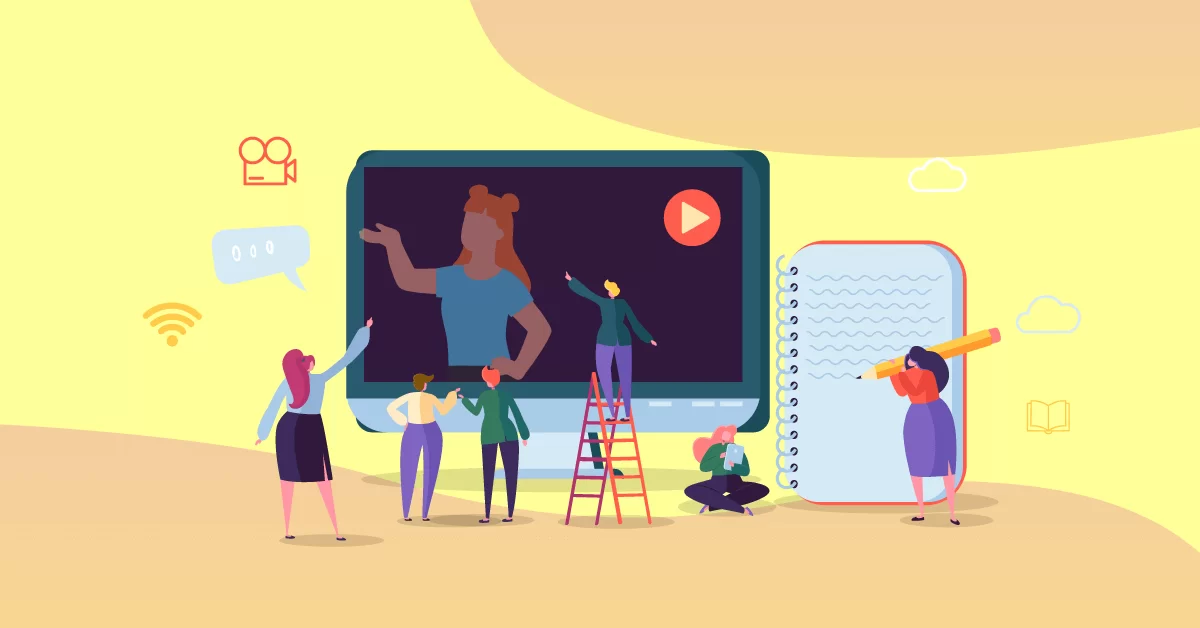Because there seem to be a few common business challenges, a few pains in your side, that just keep popping up. You’re struggling to find and keep talented employees, they’re resisting training, and you just can’t see how the business is going to achieve its strategic goals this year when there are so many skills gaps in the workplace.
But the good thing about complex problems is that they often have simple solutions. And the solution to many business challenges today is workplace learning. In fact, you’ll soon discover how online training in the workplace could help you with six of the most troubling workplace challenges.
The solution to many business challenges today is workplace learning.Share on
1. Attracting Top Talent
Millennials make up a considerable proportion of our workforce. In fact, there are 73 million Millennials in the US alone. And with them, they’re bringing techno-savvy, creative thinking and fresh perspective to the business world.
Attracting the most talented Millennials means offering what they want most, which, coincidentally, is not free food and beanbags. Nor is it good pay and a stable job.
Rather, Millennials want to be provided with opportunities to learn, grow and develop themselves so that they can make an impact and progress in their careers.
As many as 87% of Millennials say that professional development or career growth opportunities are very important to them, and yet only 12% feel that their employers actually provide them with any.
This makes workplace learning a competitive advantage for attracting the best. And online training in the workplace? A competitive advantage for attracting the best of the Millennials, by appealing to their digital worlds.
2. Retaining Top Talent
Now, the cost of replacing an employee can cost up to 33% of their salary. So once you’ve attracted the most talented employees, you’ll also want to make sure they stick around. And why would they?
Well, employees remain loyal to their employers when they’re work makes them feel satisfied, builds their morale, and boosts confidence in their ability to perform well in their jobs.
Workplace training develops those skills and knowledge areas necessary for employees to feel competent, confident, and in control of their performance. This, in turn, leads to improved job satisfaction and morale.
And those who don’t feel better from learning and developing their skills? Well, they’re probably not the kind of people you want on your team anyway.
So, integrate workplace learning into workplace norms, job descriptions, and reward structures. By making learning core to the work environment, retaining top talent is likely to fall off your list of common business challenges.
3. Creating a Learning Culture
A learning culture is found in workplaces that promote ongoing staff development, team collaboration, and transparent, constructive feedback.
This kind of culture offers a number of benefits to both employees and employers…like increased innovation and ideas, finding efficiencies, and improved competitive edge. All critical in a world where technologies, best practices, customer demands, and skills are constantly changing.
A learning culture means that the business’ greatest assets, its people, are evolving at a rate that matches the change around them. But as nice as this all sounds, a learning culture usually isn’t something that just pops up on its own. Instead, a learning culture is fostered and nurtured through continuous workplace learning.
By incorporating constant opportunities for learning and skills development, employees become accustomed to learning as an approach to work, a daily habit, and not just a once-off event. This is usually easiest to achieve through online training for team building, communication and professional writing, and other constructive workplace skills.
4. Making Learning Convenient
We get it. Time is short, and the to-do list – long. To remain competitive, every business needs every employee to be working as hard as they can in the time that they have.
This why incorporating a continuous learning culture in a time-poor workplace is one of the most pressing business challenges today.
Learning takes time, and training workshops require a bunch of employees with different priorities, different schedules, and different clients to be in the same room, on the same day, at the same time. Almost an impossible feat.
So what do you do? Cross workplace training off the list? Well, that’s just not an option. We’ve already established that frequent and meaningful workplace learning is a necessity, not a luxury. So rather than be overwhelmed with the pace of a digital workplace, leverage technology toward more flexible and convenient workplace learning.
The average Smartphone user checks their device at least 221 times a day! So, while they’re there anyway, why not create mobile learning opportunities for learning on the go?
5. Measuring and Tracking Skills Development
Customer demands are changing. They’re always seeking the latest technology, most efficient service, instant gratification, and a customized experience. And the only way businesses can meet these challenging demands, is by upskilling their employees.
Yes, employees need to be able to navigate the most complex technology like they’re related to Steve Jobs. They need to think in innovative ways, solve problems with creativity, and work seamlessly with a team of diverse cultures and perspectives.
The first step is to know which skills your workforce is missing. The next is to measure just how big that gap is. And the final step is to keep track of how effective workplace learning initiatives have been in closing that gap.
Measuring and tracking learning is tough. It’s one of those persistent business challenges that always seem to need solving. But the solution is easy… a Learning Management System.
By using an LMS to take workplace learning online, you’ll be able to pull reports, analyze performance data, track course completion rates, and create assessments to test skills levels. The best part, eLearning can be designed for convenience and flexibility through mobile learning, microlearning, and on-demand eLearning courses.
6. Executing on Strategy
A whopping 90% of companies fail to execute their strategies. Why? Well, we don’t think it’s a coincidence that 67% of HR departments don’t link their priorities to corporate strategy.
By aligning your workplace learning strategy to the broader company strategy, the return on training investment is likely to be greater. Because every learning event and opportunity is designed to equip employees with the skills that will help them contribute to strategic goals.
They’ll be learning the right things, in the right way, at the right time, so that they are more effective in achieving company objectives.

The eLearning Solution to Workplace Challenges
So you’re convinced. Workplace learning is probably something you should be focusing on if you’re keen to get rid of those common workplace challenges. But, learning isn’t an effective solution, unless it’s done right.
Workplace learning is probably something you should be focusing on!Share on
By embracing online workplace learning, you’ll be able to create learning that’s:
- Social: Using forums, live chats, wikis, online workshops, and collaborative tasks.
- Engaging: Through the use of gamification, microlearning, branching scenarios, and interactive videos and infographics.
- Empowering: Providing learners with self-directed, learner-centric activities, on-demand training, and easy-to-access information.
- Relevant: Easily updated content on current trends and job-specific materials.
- Reinforced: Learning objectives and skills that can be immediately practiced and applied in the workplace, and linked to performance metrics.
Conclusion
When it ticks all of these points, online workplace learning might just become the solution to the business challenges that keep you up at night. So find the LMS that suits your needs, and get your employees eLearning! (Unfortunately, there’s nothing we can do about those early mornings, though).



